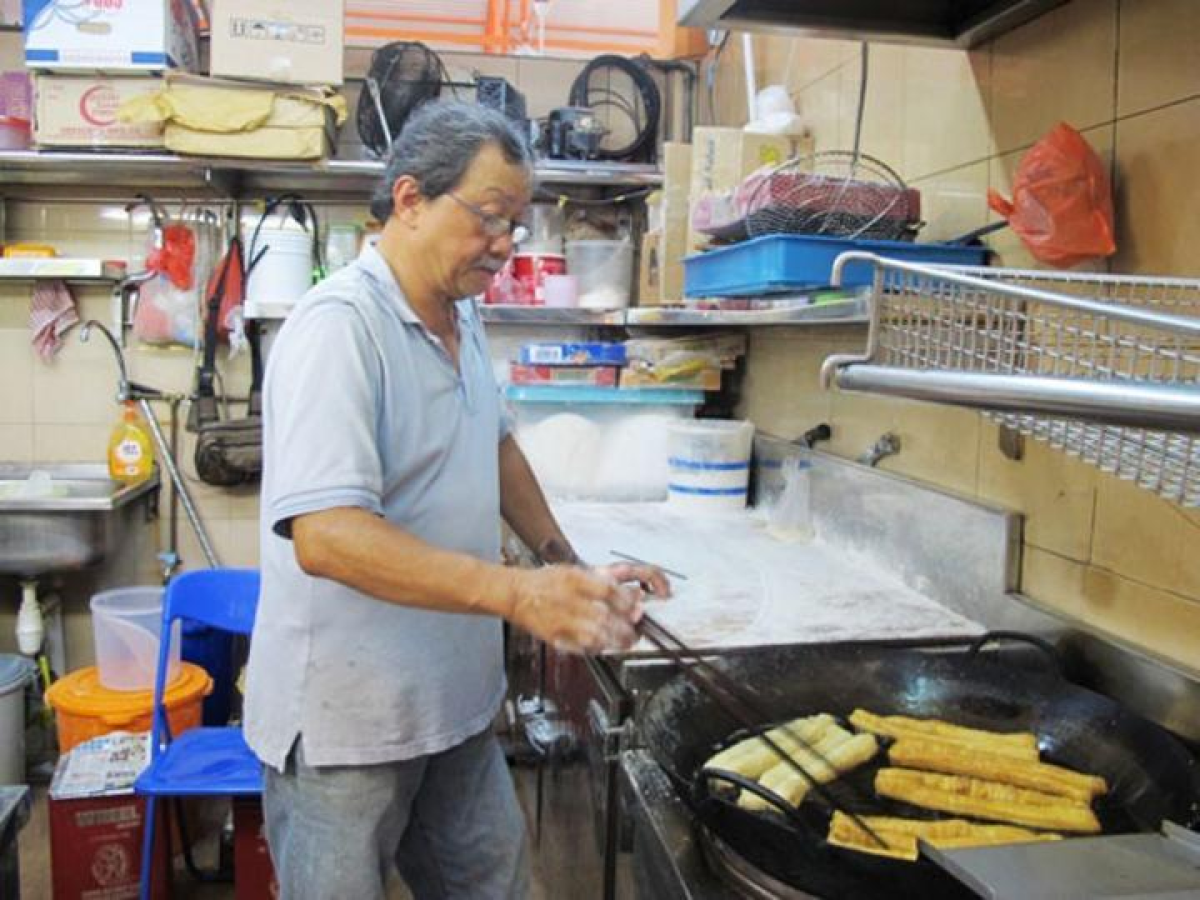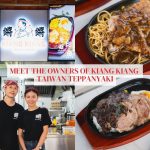Singapore Hawkers cook the French Way

Restaurant kitchens like Picotin and, on a more global scale, the salt-filled kitchens of Gordon Ramsay’s, aren’t the only places you see classic “French” method cooking school techniques being applied.
Sure, they may not be in chef’s whites. But our wonderful and beloved hawker uncles and aunties poach, sauté, and roast every day, proving that some cooking techniques are universal around the world, no matter what you call it.
There is one big difference however: hawker chefs get the meal out in minutes, and in a ridiculously tiny kitchen space. Quick meals, freshly made to order, using classic school-taught techniques – you can’t get more skillful on-the-go food than that. We observed some hawker kitchens and took notes:
Broiling and grilling
Satay
This method of direct cooking either over or under some serious flame gets food cooked fast, and with lots of tasty charred edges to boot. In professional restaurant kitchens, broiling and grilling is performed using the oven broiler, a salamander, or on a gas-fired grill, all under heavy duty hood exhausts used to suck up the billowing smoke. Classic grilled foods include steak, burgers, fish and chicken.
Satay is the hawkers answer to grilling. While some hawkers stay inside and under an exhaust fan, most satay chefs take this flaming technique outside, to take advantage of the open air (smart because it gets mighty hot standing over the fire). Over the heat from a hot charcoal or wood fire, satay chefs fire up seasoned sticks of prawn, chicken, mutton, pork, octopus, beancurd skin – you name it.
Deep-frying
You tiao and hum jin pang
Food is quickly cooked by immersing in super hot oil for just a few seconds to a few minutes. Restaurant kitchens use a large pot to fry, or have their own commercial frying stations with baskets to lower the food into the oil. Instead of tongs, hawker chefs use large chopsticks to gently turn the food as it fries. Hawker chefs use their wok to fry anything from crispy fish to curry puffs to youtiao (Chinese crullers) and hum jin pang.
Poaching
Chicken rice
In this technique of “immersion wet cooking”, ingredients are slow cooked in a liquid such as water, stock, wine. The temperature is kept barely simmering to cook the food gently. The result is super juicy, tender food.
Classic French dishes are poached eggs, poached salmon, and poule au pot, or “poached chicken”.
Hawker chefs use this same technique to create the classic Singaporean dish that we all love – Hainanese chicken rice. Here, chicken is gently simmered or poached in a rich but gently seasoned chicken stock until mouth wateringly tender and juicy. Unlike many restaurant poached dishes, where poaching liquids may go down the drain, hawker chefs make the most of it by incorporating the broth into the rice and soup.
Roasting or barbecuing
Roast chicken, duck and pork belly
Dry heat is applied indirectly to cook the food, such as in an oven. In restaurant kitchens, big hunks of meat and poultry are set in special roasting pans, which are often on a rack to let the fat drip into the bottom of the pan, and then cooked in the oven. The fat sizzles and melts away in the hot dry air, creating the best part and everyone’s guilty pleasure: that golden crisp and chewy-crunchy skin.
Hawker chefs have got the technique down golden, roasting up chicken, duck and pork in their own ovens, narrow enough to fit in a tiny hawker space but tall enough to hang and roast multiple pieces of meat. And just like in Western-style barbecues, an addictive sweet and clingy sauce is slathered onto the meat to caramelise as it roasts.
Sautéing
Carrot cake, hokkien mee and char kway teow
A classic French technique of dry heat cooking. Ingredients are cooked in a pan with oil or butter over moderate heat. To sauté means “to jump”. Applied to cooking, sautéing refers to the way ingredients are tossed and shaken about in the pan. Food is also cut into small pieces so it cooks quickly.
Hawker chefs use this same technique 24/7 and you can hear them doing it from a mile away. Instead of the skillet, hawkers tend to use one large wok, with the gas heat operated with a foot pedal instead of the knobs on a stove. Carrot cake, hokkien mee, and char kway teow are cooked this way, and transferred onto your plate in a flash. Add to this the unique essence of wok hei, a smoky flavour infused into the food that comes from the combo of high heat and a seasoned wok, and we have what sets hawker food apart from French restaurant food. Makes flambé-ing (where the dish is set on fire to burn off alcohol and impart a smoky flavour) look tame, right?
Steam cooking
Char siew bao, xiao long bao and dumplings
Another form of “wet cooking”. For this method, food is cooked quickly by enclosing it in a super hot and moist environment. This is the perfect cooking technique to prevent food from drying out.
In restaurants this is practiced by placing the food in a steamer basket that’s then set within a pot with a few inches of simmering water at the bottom. For larger scale steaming, large commercial sized steamer cabinets are used.
Hawker chefs use the steaming method for an infinite number of dishes, especially for dim sum, as well as steamed buns, dumplings, vegetables, and whole fish. Food is set in a bamboo steamer, and then the steamer is placed in a pot or steamer oven.
In her former life in the United States, Yvonne Ruperti was a pastry chef, bakery owner, magazine writer, and cooking show co-host on America’s Test Kitchen TV. Now based in Singapore, she still writes for SeriousEats.com and maintains her own food blog. When not at work, she is busy concocting up recipes for a new cookbook.




